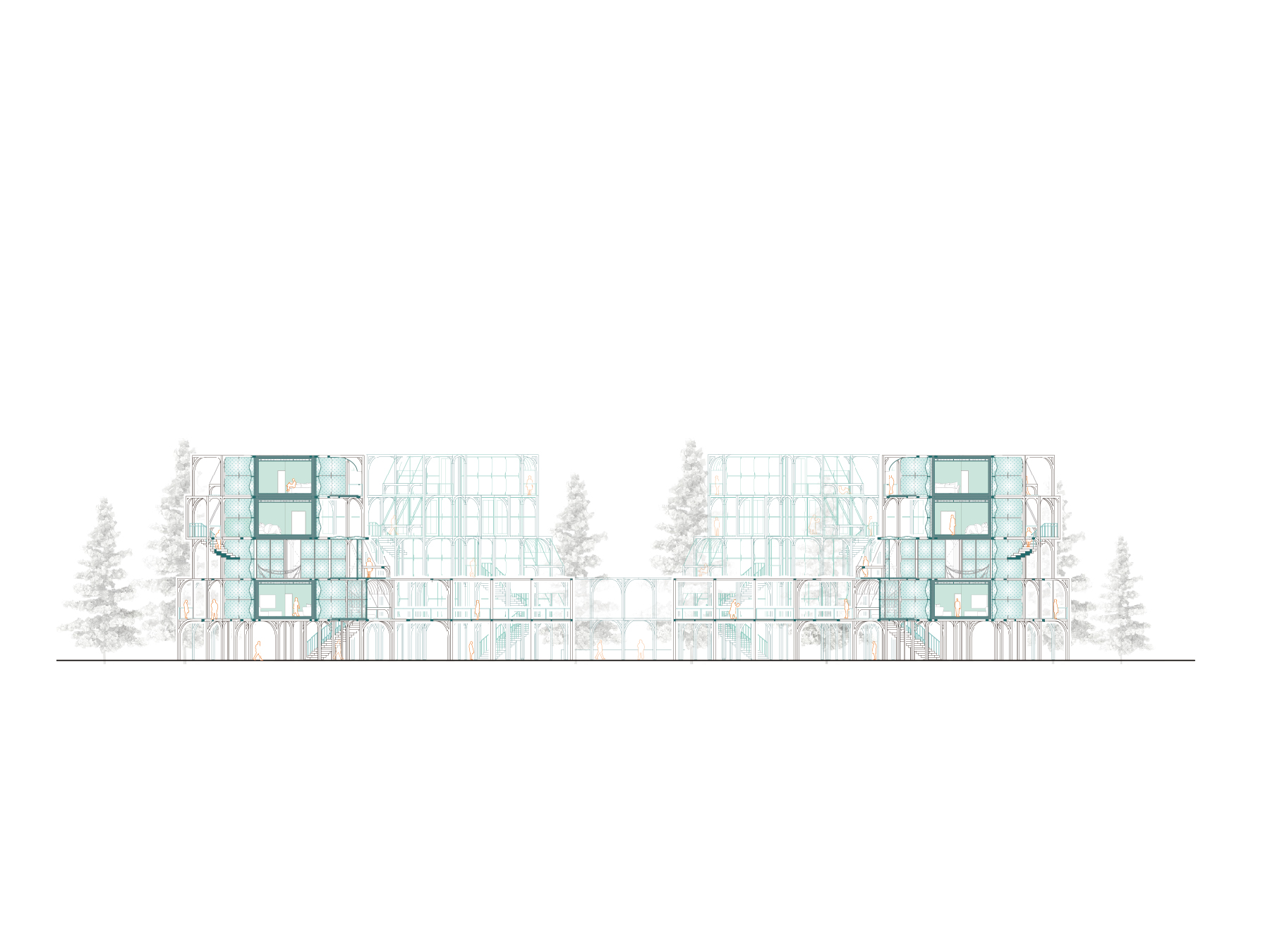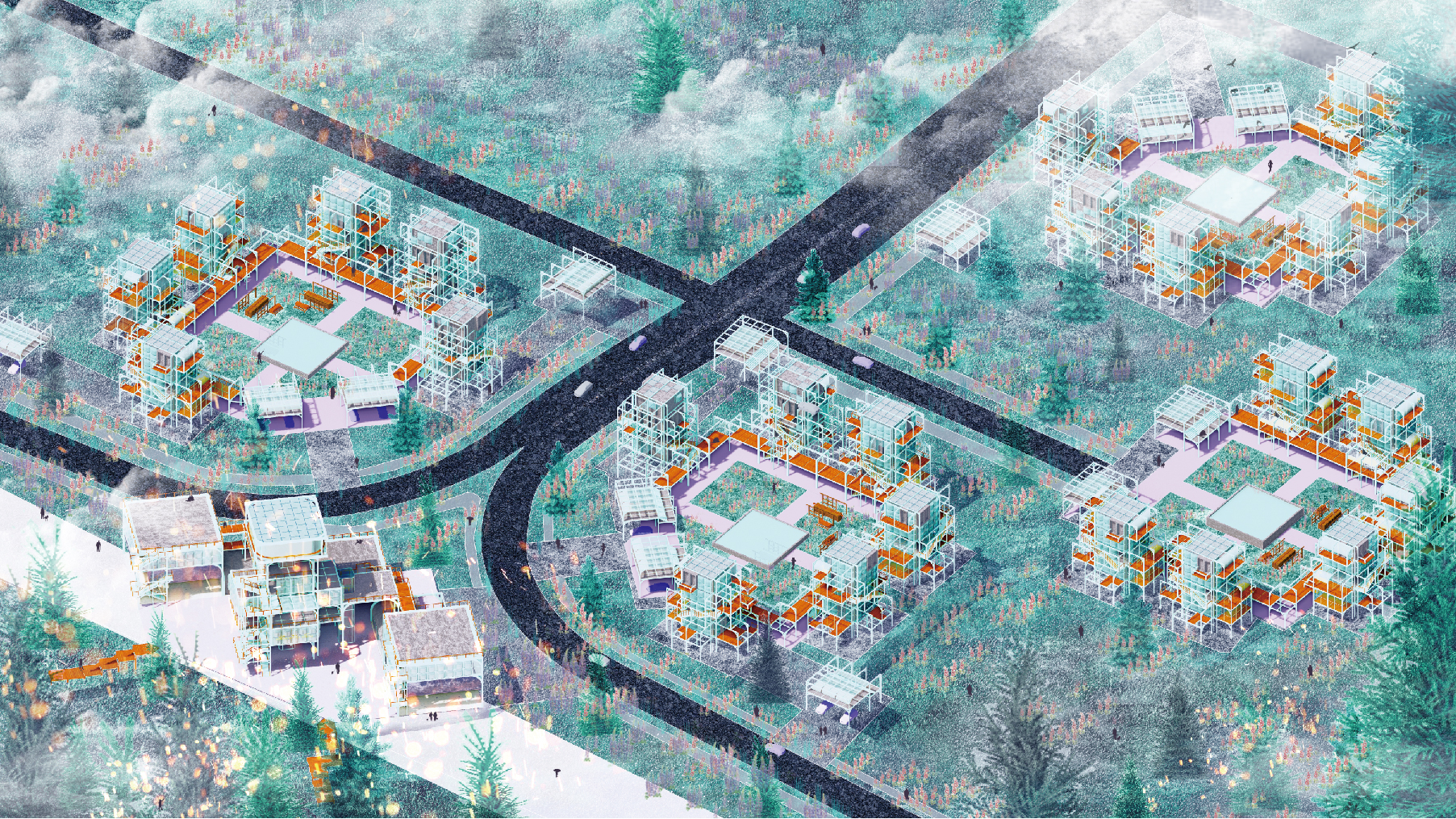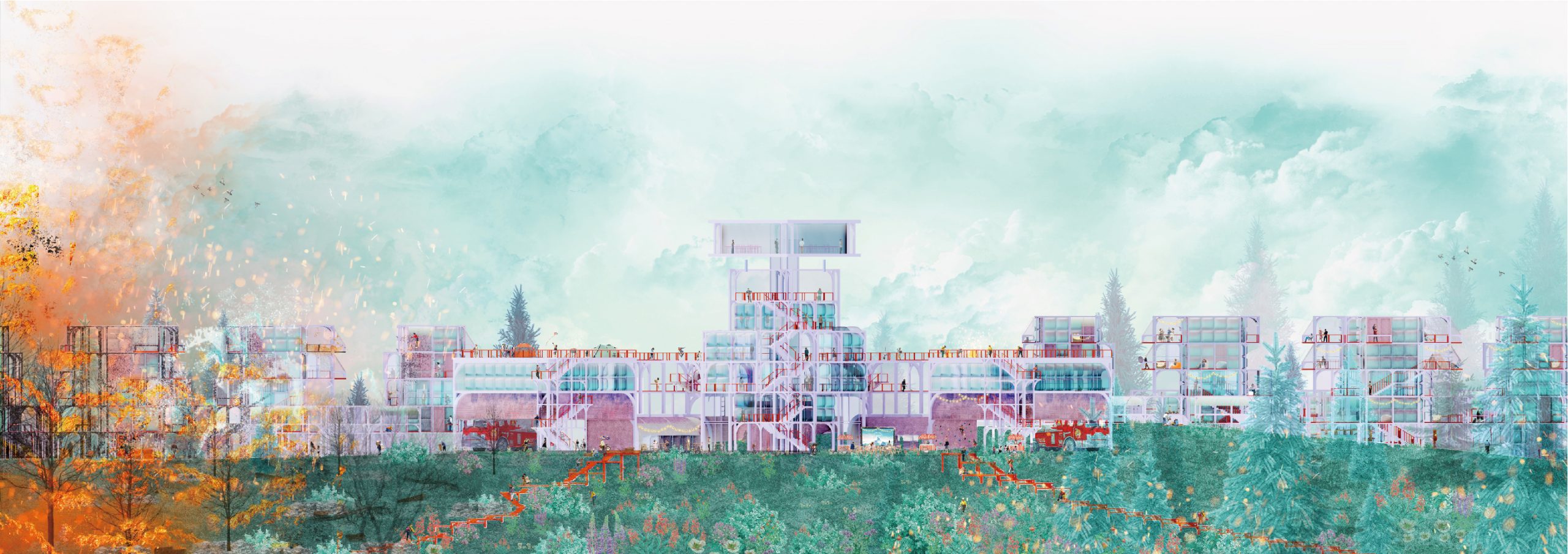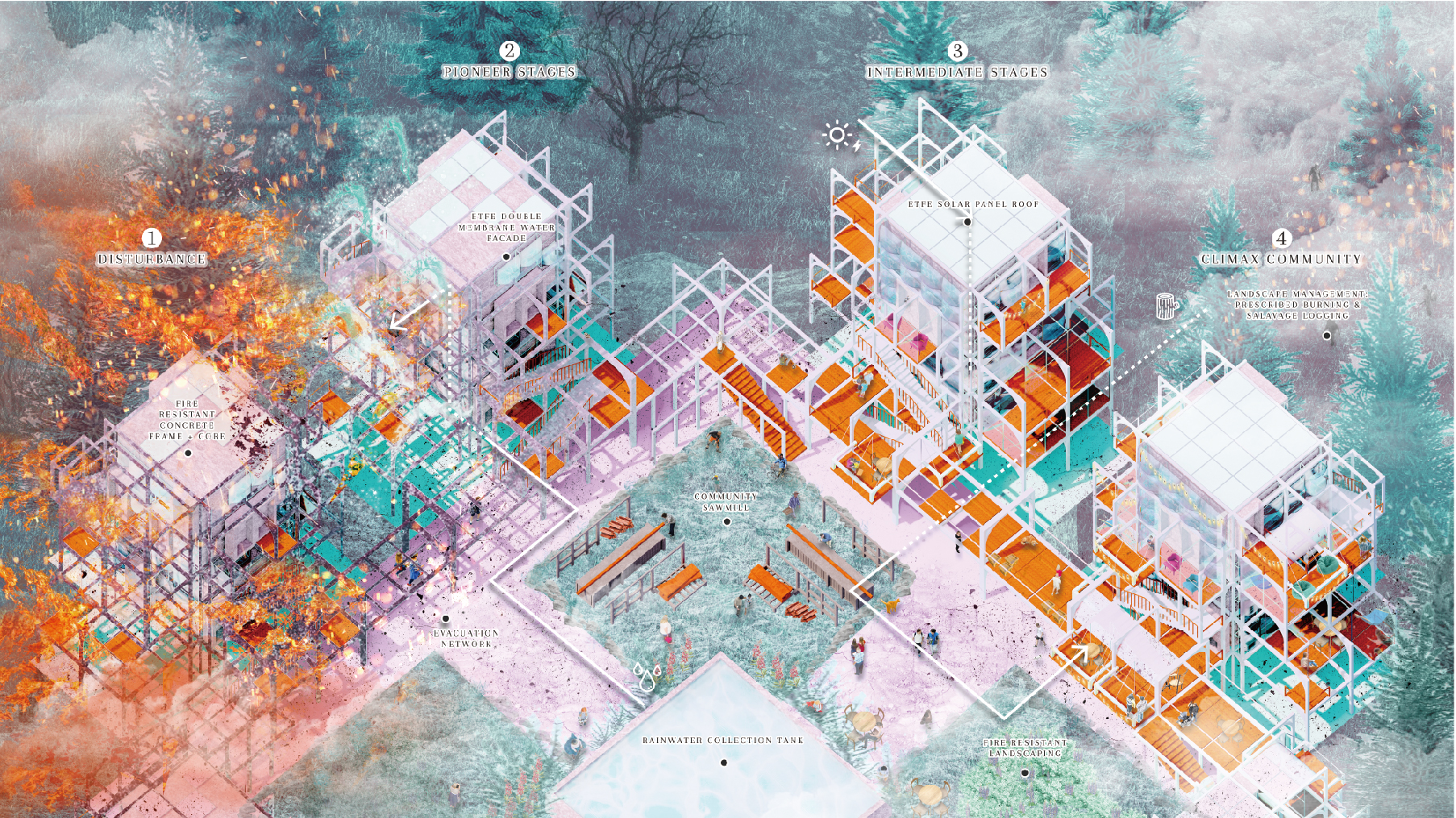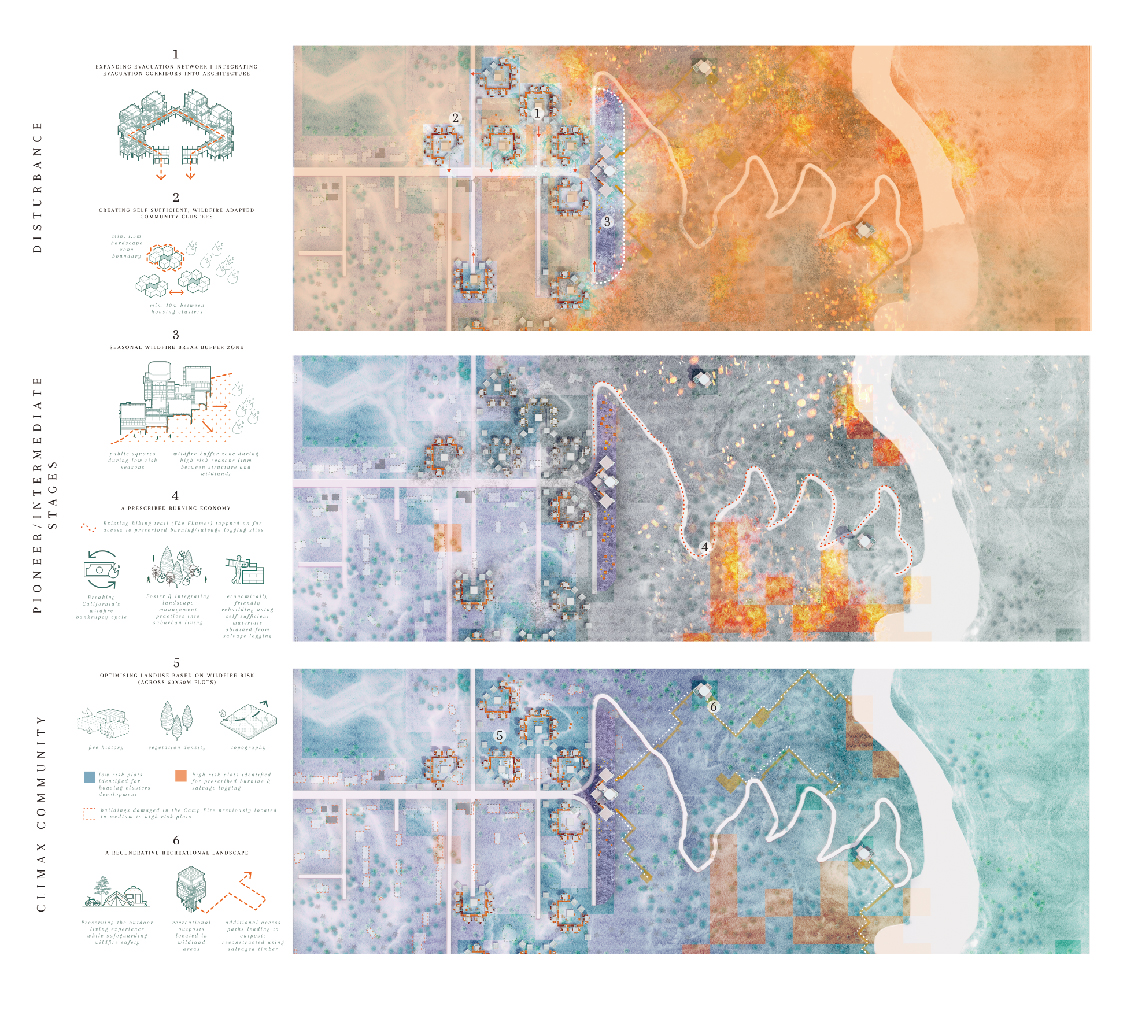順著城市發展與大自然的交觸,森林之火對與郊區建築物的威脅再近年成為了美國加利福尼亞州的關注話題。為了讓靠近大自然的郊區更頑強的應對林火的災害,建築設計也對於各種防火石材與結構進行了詳細研究,築城了各種堅如磐石的防火建築。雖然嚴謹保護的態度是韌性設計的方法之一,但過於防備性的設計不僅隔離與淡化了郊區居民與大自然的交互,也減低了郊區的宜居性。此作品在火災每況愈下的催促下,向防火韌性設計的現狀進行更深入的探討,並且為韌性設計提出了另一定義。
作品地點為美國加州在2017年受難的天堂鎮。火災後的小鎮成為了荒島,但在無人之境的情況下,堅韌性強的大自然已漸漸的重生。生態系統的植物進化特徵對林火的打擊有著與人類不同的對待:與其把林火當成一項非避免不可的天災,不如像林火生態植物一樣,接受林火在大自然裡不可或缺的腳色,並在建築設計方面對它的發生所做出應變。
《重建天堂鎮》採用了一個把林火植物的頑強特徵翻譯成建築元素的設計框架,在區域策劃,住宅建築,和防火設施建築提出設計構想。在設計藍圖裡,防火植物的高樹葉含水量成為了雙層ETFE含水立面、不易燃的樹皮結構成為了混凝土核心樓、而藉助火勢放萌的特徵則成為了利用火候回收木材重建的半戶外陽台等等。
As urban habitats and natural landscapes become increasingly intermixed, wildfires that are capable of devastating entire towns and communities have become
commonplace in wildland-urban interface areas. This thesis takes a critical relook at wildfire resilience by understanding the wildfire crisis in the Californian
context, where the pursuit towards aggressively fortifying urban habitats has become modus operandi. In proposing the alternative premise of wildfire
inevitability and reframing the idea of resilience towards one that designs for wildfire-adapted rather than wildfire-resistant communities, this project takes
reference to resilient wildfire ecosystems as its architectural design framework.
Ecosystems have long been regarded as optimised, disturbance-acclimatised systems: considering that wildfire adapted forests have fared far better than its urban
counterparts in surviving fires, there is much to be learnt from ecology when it comes to urban resilience. Therefore, by deconstructing the adaptive features and
time-specific mechanisms that make up the ecological model of fire adapted ecosystems, a prototype for its urban-architectural equivalent was envisioned. This
prototype takes on the form of a strategically vulnerable, regenerative suburban community situated in Paradise, a town left crippled by one of California’s most
destructive fires.
Ultimately, the vision for Rebuilding Paradise brings forward an alternative way of approaching wildfire resilience from an ecological perspective that allows
suburban communities and their surrounding ecological systems to coexist synchronously with one another. It is a rebuttal against the typically loss-adverse,
hyper-defensive narrative for resilience, proposing instead for an approach of targeted loss and regeneration.
